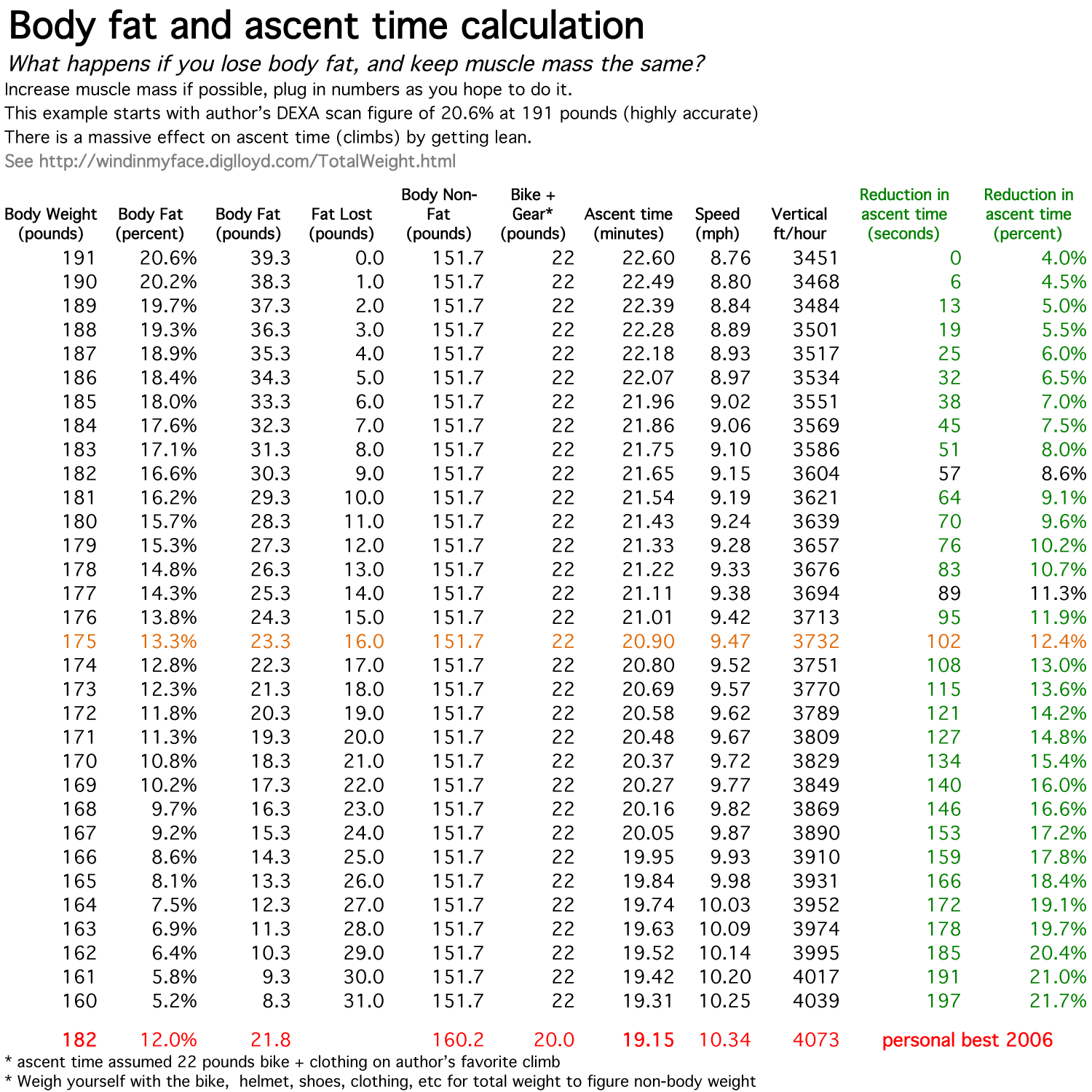
$220 SAVE $130 = 37.0% Western Digital 16.0TB Western Digital Ultrastar DC HC550 3.5-in… in Storage: Hard Drives
|

|

|

|

|
Faster Ascents By Reducing TOTAL Riding Weight (TRW)
For extreme climbing as in the Everest Challenge, every extra pound of weight translates directly into increased ascending time. Any means of reducing total riding weight can make a large difference.
Steep climb savings
On a steep climb, most energy goes into higher kinetic potential: the energy you expend moves you and your bike up the hill. Friction from wind, tires and mechanical drag is at a minimum; it’s mostly about the grade
- How fast one one ascends a steep grade is almost a pure power-to-weight issue.
- How fast one goes on flats is a pure power issue (given any particular setup), with nearly all the energy going into drag (air resistance).
Body weight and relative gain
Assume a total weight (rider+bike+gear) of 160 pounds, versus 200 pounds.
For a 160 pound cyclist+bike+gear, a savings of 2 pounds is a 25% more effective gain than for a 200 pounder, because the ascent savings is proportionally more for the lighter rider.
Saving weight in the wheels is best of all, because it’s rotating weight.
Non-obvious benefits of reduced weight (fat)
One can argue that reductions in weight do not result in linear reductions in ascent time, since there are friction and mechanical losses. This is certainly true, but on steep climbs the speeds are low, and the air friction does not increase substantially.
There are key benefits that the math nerds computing friction coefficients just skip over:
- Reduced weight is a psychological boon because ascending just feels easier— if you feel fast, you will ride faster; it’s self reinforcing.
- Reduced weight means increased comfort for the entire body.
- Reduced weight means less friction on the tires (probably negligible effect unless under-inflated).
- Reduced weight means a higher cadence, which reduces premature muscle fatigue on steep grinding climbs.
- Reduced weight increases the amount of time that the rider can stay aerobic as the climb steepens (less power needed for any given speed), thus preserving precious glycogen, and perhaps reducing fluid loss; there is a wider band of exertion which is possible.
- Perhaps most important on hot days, reduced weight means less insulating body fat, so that heat can escape the body core more easily. Increased body core temperature results in a pronounced reduction in performance.
These benefits might well mean that the gains from reducing weight could actually be greater than computed here, at least when the reduction is more significant.
Read more on the next page
Click the chart to keep reading.
Seagate 22TB IronWolf Pro 7200 rpm SATA III 3.5" Internal NAS HDD (CMR)
SAVE $100




